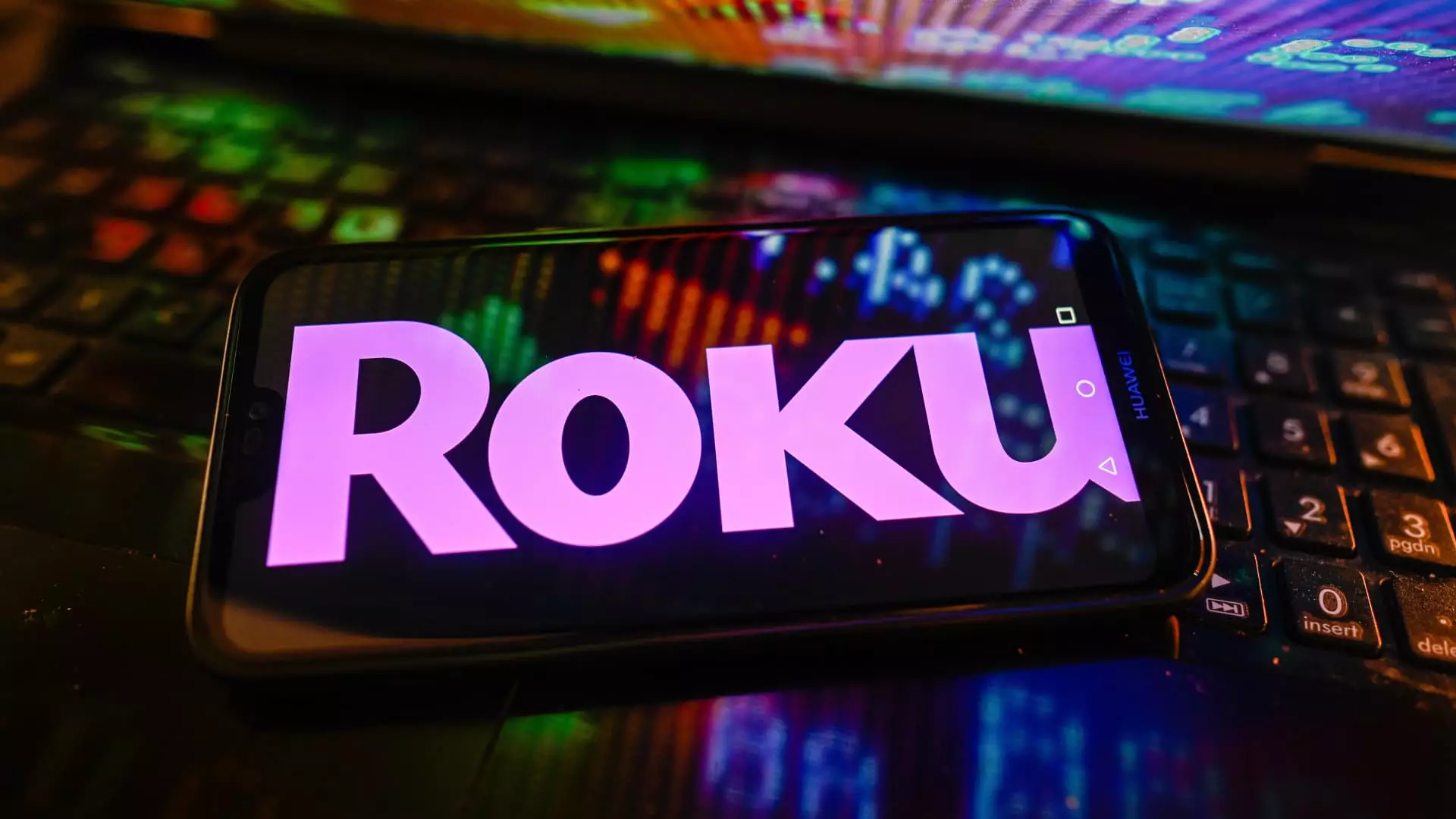On Friday, Roku Inc. experienced a remarkable surge in its stock price, with shares rising over 10% at one stage and achieving a significant 52-week high. This bullish response came in light of the company’s most recent earnings report, which not only surpassed Wall Street’s expectations but also reflected a robust trajectory of growth. The company’s CEO, Anthony Wood, shared insights during an appearance on CNBC’s “Squawk Box,” indicating that Roku has successfully penetrated over half of U.S. broadband households, making it a dominant player in the streaming market.
Roku’s performance for the recent quarter showcased a striking addition of over four million new streaming households—a feat that positions the company on a clear path towards reaching the milestone of 100 million streaming households within the next year. Wood emphasized the strength of the Roku user experience, which has been pivotal in attracting and retaining users. By prominently featuring content on its home screen, Roku has solidified its reputation as the leading streaming operating system not just within the United States but across a significant portion of the Americas.
The fourth-quarter figures revealed an interesting narrative, as Roku reported a net loss of $35.5 million, translating to a loss of 24 cents per share. This represents a notable improvement compared to the previous year’s loss of $78.3 million, or 55 cents per share. Revenue for the quarter reached $1.2 billion, exceeding the anticipated $1.14 billion and marking a robust 22% increase year-over-year. Analysts had predicted a broader loss, thus the better-than-expected figures helped reinforce investor confidence in the company’s operational capabilities.
Interestingly, Roku announced a shift in its reporting strategy. Moving forward, the company will no longer disclose its streaming household metrics, instead opting to concentrate on revenue and profitability metrics. This decision may suggest that Roku aims to streamline its performance indicators to present a clearer picture of its financial health. Additionally, Roku recorded an 18% year-over-year spike in streaming hours during this period, a reflection of both increased user engagement and content consumption.
Wood emphasized the critical role of advertising within Roku’s business strategy, stating that enhancing demand through collaborative efforts with third-party platforms is pivotal. As the streaming landscape becomes increasingly competitive, Roku’s focus on strengthening its advertising integration could be a crucial differentiator that sustains its growth.
Looking Ahead: Positive Forecasts
Roku is gearing up for a promising start to 2025, forecasting net revenue of approximately $1 billion with a projected gross profit of $450 million for the first quarter. This outlook underscores the company’s commitment to not only expanding its user base but also enhancing profitability. As Roku navigates the challenges of a dynamic market, its strategic initiatives and emphasis on user experience will play vital roles in sustaining its competitive edge in the streaming industry.

